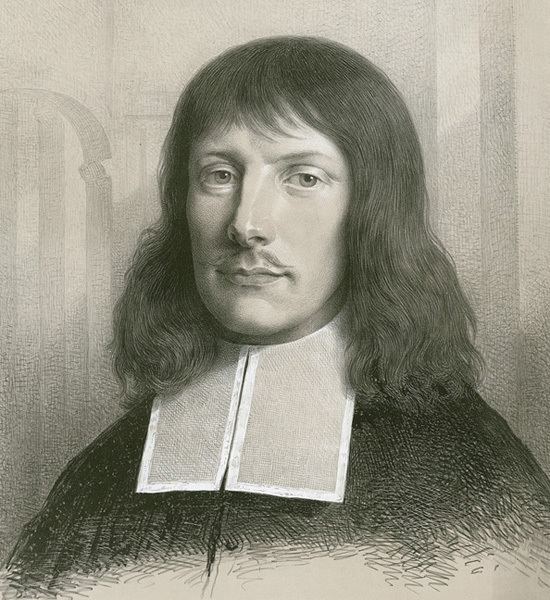Movements 5 | ||
 | ||
Instrumental 3 trumpetstimpani2 oboes2 violinsviolacontinuo | ||
Lobe den Herren, den mächtigen König der Ehren (Praise the Lord, the mighty King of honor), BWV 137, is a church cantata by Johann Sebastian Bach. He composed the chorale cantata in Leipzig for the twelfth Sunday after Trinity and first performed it on 19 August 1725. It is based on the hymn by Joachim Neander (1680).
Contents
History and words
Bach composed the cantata for the Twelfth Sunday after Trinity. It forms part of a cycle of chorale cantatas which Bach composed in Leipzig over a period of two years 1724–25. In 1724, his second year in the city, Bach had composed chorale cantatas between the first Sunday after Trinity of 1724 and Palm Sunday, but for Easter had returned to cantatas on more varied texts, possibly because he lost his librettist. Later Bach composed again chorale cantatas to complete his second annual cycle. This cantata is one of the completing works. It is based entirely on the unchanged words on the hymn "Lobe den Herren, den mächtigen König der Ehren" (1680) by Joachim Neander.
The prescribed readings for the Sunday were from the Second Epistle to the Corinthians, the ministry of the Spirit (2 Corinthians 3:4–11), and from the Gospel of Mark, the healing of a deaf mute man (Mark 7:31–37). Unlike most chorale cantatas of the second cycle, but similar to the early Christ lag in Todes Banden, BWV 4, Bach left the chorale text unchanged, thus without a reference to the readings.
John Eliot Gardiner assumes, looking at the festive instrumentation and the general content of praise and thanksgiving, that the cantata was also performed that year to celebrate Ratswahl, the inauguration of the town council. Bach used in 1729 the setting of the final chorale, transposed to D major, to conclude the wedding cantata Herr Gott, Beherrscher aller Dinge, BWV 120a with the last two stanzas of the hymn.
Scoring and structure
The cantata in five movements is festively scored for four soloists, soprano, alto, tenor and bass, a four-part choir, three trumpets, timpani, two oboes, two violins, viola, and basso continuo.
- Chorus: Lobe den Herren, den mächtigen König der Ehren
- Aria (alto): Lobe den Herren, der alles so herrlich regieret
- Aria (soprano, bass): Lobe den Herren, der künstlich und fein dich bereitet
- Aria (tenor): Lobe den Herren, der deinen Stand sichtbar gesegnet
- Choral: Lobe den Herren, was in mir ist, lobe den Namen
Music
As Alfred Dürr and Gardiner observed, the text as well as the chorale melody is present in all movements. The cantata is constructed in symmetry: the soprano carries the melody in the outer movements, in movement 2 it is sung by the alto, and in movement 4 played by the trumpet. In the central movement, the beginning of both the vocal and the instrumental theme are derived from it in the most intimate setting of the work. The melody in bar form has a Stollen of unusual five measures and reaches a climax at the beginning of the Abgesang, which Bach also stresses in a variety of means in the movements.
In the opening chorus the trumpets, oboes and strings play a concerto; the soprano sings the cantus firmus while the lower voices prepare the entries by imitation on the instrumental motifs. For the words "Kommet zu Hauf, Psalter und Harfen, wacht auf" (Come join the crowd, psaltery and harps, awake!), the setting is homophonic and accented.
In movement 2, a violin accompanies the embellished melody of the chorale. Bach included this movement in his Schübler Chorales, but on a text for Advent, "Kommst du nun, Jesu, vom Himmel herunter auf Erden".
In great contrast to C major and G major, the central duet is in E minor. Two obbligato oboes take part in the setting. In an unusual way, the first vocal section is repeated three times; only the words "In wieviel Not" (in how much suffering) are set differently in "grinding chromatic descent".
Movement 4 is in A minor, but the cantus firmus of the trumpet is nonetheless in C major, in "a battle for harmonic supremacy". In the final movement of his Christmas Oratorio Bach would later embed the chorale in doric mode in a concerto in D major. The independent vocal line "quotes" parts of the chorale melody several times. The words "Denke daran" (consider this) are accented to a different meter.
Bach set the closing chorale for four vocal parts and three independent trumpet parts, for an affirmative conclusion. Gardiner notes: "He knew exactly how best to use the resources of the ceremonial trumpet-led orchestra and choir of his day to convey unbridled joy and majesty."
